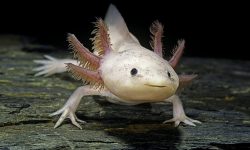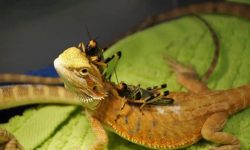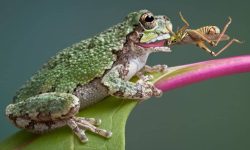Earthworms may not look like much at first glance, but these wriggling creatures are nature’s tireless gardeners. They play a vital role in maintaining healthy soil, recycling organic matter, and improving plant growth. But have you ever wondered what worms eat and how they turn waste into rich compost?
In this detailed guide, you’ll learn everything about a worm’s diet — from what they naturally consume in the soil to what you can feed them in your compost bin. We’ll also explore 20 foods earthworms love, feeding tips, and what to avoid to keep them thriving.
Understanding What Worms Eat

Earthworms are detritivores — meaning they feed on decomposing organic material. They don’t bite, chew, or tear their food like other animals. Instead, they consume small bits of soil, plant matter, and microbes, digesting nutrients as they pass through their bodies.
A worm’s digestive system relies heavily on microorganisms and grit. As organic matter decomposes, it softens and becomes easier to eat. Inside the worm, beneficial bacteria break it down further, producing worm castings — the nutrient-rich fertilizer gardeners call “black gold.”
Worms don’t just eat; they also aerate and enrich the soil. Every meal they process improves soil structure, moisture retention, and fertility. In short, understanding what worms eat is the key to supporting healthy soil and compost ecosystems.
What Do Worms Eat in the Wild?
In nature, worms feast on what’s available around them — dead leaves, decaying roots, grass, manure, and microorganisms. They thrive in moist, dark environments where organic matter is constantly breaking down. Their diet varies with the seasons and soil composition.
Wild worms help recycle nutrients by feeding on decomposing plants and animal remains. As they move through the soil, they distribute nutrients and beneficial microbes, helping plants absorb what they need. Essentially, worms are natural composting machines working silently underground.
What Do Worms Eat in Compost?
Compost worms (also known as red wigglers) have a more concentrated diet than wild earthworms. They eat kitchen scraps, vegetable peels, coffee grounds, and paper products — anything organic that decomposes quickly.
However, not all foods are suitable. Certain acidic, oily, or processed foods can harm them or attract pests. The ideal compost worm diet is rich in fiber, moisture, and natural sugars, balanced with a bit of grit from soil or eggshells to aid digestion.
Now, let’s explore the 20 foods worms love in both soil and compost.
20 Foods Worms Love the Most
1. Fruit Scraps
Worms love fruit scraps like apple cores, banana peels, melon rinds, and pear skins. These leftovers decompose quickly, providing both moisture and energy. Fruits are rich in natural sugars, which stimulate microbial growth — something worms depend on.
Avoid citrus fruits such as oranges and lemons, as their acidity can irritate worms. Stick to mild, soft fruits for a healthy compost bin.
2. Vegetable Peels
Vegetable waste is one of the best worm foods. Carrot tops, lettuce leaves, potato peels, and cucumber skins all break down easily in compost. These provide vitamins, minerals, and fiber essential for a worm’s digestive process.
Chopping vegetable scraps into smaller pieces helps worms consume them faster and keeps the compost pile from overheating or smelling.
3. Coffee Grounds
Coffee grounds are a worm favorite! They’re fine-textured, moist, and rich in nitrogen — a nutrient that helps worms grow. The gritty texture also aids digestion, acting like sandpaper inside their gizzard.
However, moderation is key. Too many coffee grounds can make the compost acidic, so it’s best to mix them with leaves or shredded paper for balance.
4. Tea Bags and Loose Tea
Used tea leaves are soft and full of nutrients worms adore. They decompose quickly, releasing tannins and organic matter that worms easily process. Just remove staples or plastic from tea bags before tossing them in.
Loose herbal teas, like chamomile or green tea, are equally good. Worms appreciate their mild composition and moisture-retaining properties.
5. Dead Leaves
In the wild, worms thrive under leaf litter. Fallen leaves are an excellent food and bedding source. As they decompose, they release minerals and organic compounds worms love.
Adding dried leaves to compost provides “brown” material — carbon-rich food that balances the “green” nitrogen-rich scraps. Together, they create a healthy environment for worms to thrive.
6. Grass Clippings
Fresh or dried grass clippings are another excellent food source. They decompose fast, producing heat and nutrients. Worms eat the softened material after initial decomposition.
However, avoid adding too much at once — large amounts can heat up and suffocate worms. Mix grass with shredded paper or cardboard to keep things balanced and airy.
7. Paper and Cardboard
Yes, worms can eat paper! Shredded newspaper, cardboard, and brown paper towels make great bedding and food. They provide carbon and structure to compost piles, helping worms move freely.
Avoid glossy paper, ink-heavy prints, or waxed cardboard — these contain chemicals harmful to worms. Stick to plain, biodegradable options instead.
8. Eggshells
Crushed eggshells are essential for worms. They’re rich in calcium, which strengthens worm cocoons (eggs) and balances compost pH levels. The rough texture also aids digestion, much like grit in a bird’s gizzard.
Be sure to rinse and crush eggshells finely before adding them. This prevents unpleasant odors and helps them break down faster.
9. Manure
In the wild, worms naturally feed on manure — especially from herbivores like cows, horses, or rabbits. It’s packed with decomposed plant material and beneficial bacteria.
Compost worms thrive on aged manure, which provides a consistent, balanced food source. Avoid fresh manure, as it can be too hot and acidic.
10. Straw and Hay
Straw and hay act as both bedding and food. They decompose slowly, offering long-term sustenance. Their fibrous structure also prevents compacting, allowing air circulation in worm bins.
Worms gradually consume the softened fibers as microorganisms break them down. This combination of structure and nutrition makes straw a favorite in large-scale composting.
11. Melon Rinds
Watermelon and cantaloupe rinds are a treat for worms. They’re soft, full of water, and break down quickly, creating a moist feeding zone.
Worms are especially drawn to melon because it ferments slightly, attracting beneficial bacteria. Just remember to bury the scraps deep in the bin to avoid fruit flies.
12. Apple Cores and Peels
Apples are sweet, soft, and full of fiber — a perfect worm snack. In soil and compost, apple scraps decompose quickly, offering energy and hydration.
To speed things up, cut apples into small chunks. Worms will gather around these pieces and break them down within days in a healthy compost system.
13. Bread and Grains (in moderation)
Worms can eat small amounts of bread, rice, and cooked grains as long as they’re plain and mold-free. These foods provide carbohydrates that boost energy and microbial activity.
However, avoid adding too much — excess grains can attract pests and create sour smells. Always mix them with other organic materials for balance.
14. Plant Roots and Stems
In soil, worms feed on decaying roots and stems left after plant growth. These fibrous parts decompose slowly but steadily, ensuring a continuous food supply.
In compost, finely chopped stems break down faster. They also help aerate the pile, preventing compact layers that suffocate worms.
15. Banana Peels
Banana peels are among the most beloved foods for compost worms. They’re soft, moist, and loaded with potassium and magnesium. These nutrients promote healthy reproduction and casting production.
Cutting banana peels into small strips accelerates decomposition. Burying them under compost layers prevents fruit fly infestations.
16. Cucumber and Lettuce
These watery vegetables are refreshing for worms and provide hydration during dry periods. In compost bins, they decompose rapidly, attracting a high density of worms.
Because they’re mostly water, cucumbers and lettuce should be balanced with drier materials like paper or straw to prevent sogginess.
17. Pumpkin and Squash
Pumpkins, zucchinis, and other gourds make an excellent seasonal food source. Their soft interiors and seeds are packed with nutrients. Worms swarm these vegetables once they start breaking down.
After Halloween, many composters bury pumpkin pieces in bins. Within a week, they become worm feasting zones rich in organic activity.
18. Corn Husks and Cobs
Corn husks and leftover cobs are fibrous but digestible once softened. Worms prefer the inner husks and kernels that decompose easily. The rough texture also adds structure to compost.
Cutting cobs into smaller sections speeds up the breakdown process. Over time, worms will consume even the toughest parts.
19. Paper Towels and Napkins
Used, non-bleached paper towels and napkins (without oil or chemicals) are safe worm foods. They decompose quickly, adding carbon to compost. Worms consume them readily as they soften.
Avoid paper contaminated with cleaning agents or grease, as these can harm your worm colony.
20. Decaying Plants and Compost Waste
The final and most common food source is simply decaying organic matter — the heart of every compost pile. Worms eat decomposing vegetables, roots, and microbial residues.
This natural buffet fuels them continuously, creating a self-sustaining compost ecosystem. The result? Rich, dark, crumbly soil teeming with nutrients.
How Worms Process Food
Worms don’t chew; instead, they swallow small particles along with bits of soil. Inside their digestive tract, the gizzard grinds food with the help of grit, much like a bird’s stomach. Microbes and enzymes then break down the matter further.
The digested material exits as worm castings, which are rich in nitrogen, phosphorus, potassium, and beneficial bacteria. These castings improve soil structure, moisture retention, and plant health.
Foods to Avoid Feeding Worms
Not everything organic is safe for worms. Here are some items to keep out of compost bins:
-
Citrus fruits (too acidic)
-
Onions and garlic (strong smell, can repel worms)
-
Meat, dairy, or oily foods (cause odor and attract pests)
-
Salty or processed foods (dehydrate and harm worms)
-
Spicy foods or sauces (irritate their skin and system)
Keeping the compost environment mild, moist, and chemical-free ensures worms stay happy and productive.
How Often to Feed Worms
The amount and frequency of feeding depend on the number of worms and bin size. A good rule of thumb is to add food once or twice a week, only when most of the previous scraps have disappeared.
If food starts piling up, cut back — overfeeding can cause anaerobic conditions and bad smells. The ideal compost should smell earthy, not sour or rotten.
Why Worms Are Essential for Healthy Soil
Earthworms are the ultimate recyclers. Every time they eat and move through the soil, they improve its structure and fertility. Their tunnels allow air and water to penetrate deeper, encouraging root growth.
Their castings (worm poop) are packed with nutrients and beneficial microbes that enhance plant health naturally. Without worms, soil would compact, nutrients would stagnate, and decomposition would slow dramatically.
FAQs About What Worms Eat
Do worms eat soil?
Yes. Worms ingest soil that contains organic matter, fungi, and microbes. They extract nutrients and excrete nutrient-rich castings.
Can worms eat citrus or spicy food?
No. Acidic or spicy foods can harm worms by altering the compost’s pH balance.
How much food can worms eat per day?
Worms can consume about half their body weight in food daily under ideal conditions.
Can worms eat cooked food?
They can, but only if it’s plain and unseasoned. Avoid oils, salt, or sauces.
What happens if worms don’t have enough food?
They’ll slow down reproduction and movement, but can survive on soil microbes until new food becomes available.
Conclusion
Worms may be humble, but their dietary habits power entire ecosystems. From fallen leaves and vegetable peels to coffee grounds and decaying roots, they turn waste into wealth — enriching soil and sustaining plant life.
Whether in your garden or compost bin, providing the right foods helps these underground heroes thrive. By understanding what worms eat, you’re not just feeding them — you’re feeding the earth itself.






